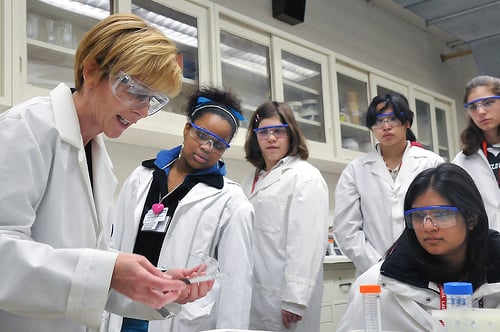Published on
Put The Focus Back On Career And Technical Education

Career and Technical Education in the United States has always been the low hanging fruit on the tree of learning from the Federal perspective. This means it is the first item cut from budgets when financial constraints are pending.
In 2010, federal reports contradicted their own findings. On the one hand, they stated that students who are in Career Academy achieve higher grades, have a better attendance rate and are more likely to graduate then students not involved in Career Academies, yet they cut funding because, apparently, there was no evidence to support positive outcomes.
This is not unique of Career Academies; higher achievement results are a parallel factor with involvement. The more involvement a student has in the learning institution such as sports or fine arts the better focus and higher achievements result.
But in the local districts and schools, Career Academies and incentive activities/programs are the adrenalin gland that brings life to students’ achievement. That is why I am creating “Real Steps Career & Education Foundation” (RC&E). A non-profit entity that will work directly with high schools and middle schools to create, implement and ensure successful Career Academies across multiple disciplines. These academies will teach industry certifications, learning skills for higher education and job readiness for real world situations and later take the endeavor national.
Higher Education needs better prepared students with their learning skills already fine tuned. Students need to know what type of learner they are and be able to adapt the instructional type to match their learning style. High schools focus on teachers understanding and using differentiated teaching models and approaches to reach more students. Why wouldn’t it make sense for someone entering into higher education to at least know themselves in the same respect? The sooner this can be taught the better, middle schools should be the next candidate for approach.
The funding to make this happen is the main obstacle. With Career and Technical Education (CTE) funding being cut, who is going to foot the bill to make it happen? It is the parties who will benefit the most, local and domestic businesses. That is why it makes sense to approach this effort from a non-profit standpoint, allowing the local businesses that will hire these students to help fund the endeavor with federal and state governments providing supplemental funding.
On a personal note, this is the way I needed to approach it. I want to be able to go to any school and offer to help, and if the school can’t pay for the startup cost, I couldn’t just walk way. I will get the job done regardless of payment. These academies (if designed properly) can become self funding within 1-3 years and begin generating additional revenue for the school or school district.
Author Perspective: Administrator

